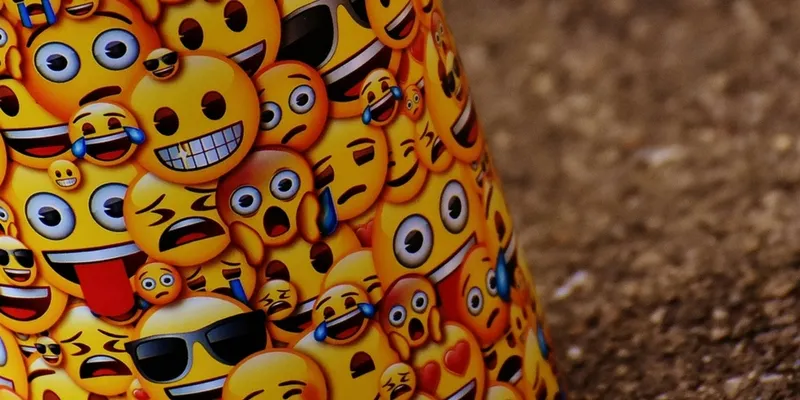How to use emojis and GIFs to make your marketing better
If you read a lot of celebrity news, you would know by now that there is an emoji collection called Kimoji, an emoji exclusively for Kim Kardashian West, an American reality TV celebrity. There are other celebrities who have emojis of their own as well – Ellen DeGeneres, Kevin Hart, and Justin Bieber, to name a few.
Could brands be left far behind? You will find emojis for Coca-Cola, Ikea, Mentos, Pepsi, Disney, you name it – most of the big brands have them today. Even the Head of the Catholic Church had an emoji created by Swyft Media as a welcome of sorts when he was visiting the US, called the Popemoji.
For the longest time, GIFs and emojis were looked at simply as things that fascinated kids (read millennials) and would have never caught the attention of marketers of all people. Even LinkedIn has come up with emojis now, and power users say that using them has shown significant improvement in traction on their posts. Facebook says that on an average 60 million emojis are sent every day on Facebook, while 5 billion emojis are sent every day on Messenger.

GIFs, on the other hand, have been around for a very long time. The Graphics Interchange Format was developed by a team in 1987 and supports animations in short loops. GIFs have seen massive adoption in recent times thanks to their ease of use and widespread support and portability. Platforms like Messenger and WhatsApp have added GIF functionality in recent times.
So there is no doubt about how popular emojis and GIFs have become, but how have marketers used them for marketing for brands? Here is a quick look:
It’s easy to connect with emojis
GIFs and emojis do not take a lot of time to understand, and most people identify with them because of familiarity. Even if you are discussing a dry subject that is possibly difficult to understand for a layman, you can tone down the seriousness of the subject with an emoji or explain a dull point with a GIF.
Great for showcasing your products
GIFs are great for showcasing products and have the capacity to capture the attention of a visitor better than a static image. Imagine you have a suite of products that you sell. Putting them individually in a blog post for the users to see might take up a lot of space, and is pretty redundant too. There is nothing special about it. However, collating all of them on a single GIF saves a lot of space and also grabs the interest of your audience.
Create stories with GIFs
You can expect GIFs not to go out of style for a pretty long time. They are great for short storytelling. How does that help you as a marketer? People love stories – period. Why not craft a marketing message in the form of a story, or even introduce a brand in snippets saying what the new product entails? To enhance your communication abilities, here are some tools that you can use to create GIFs – GIFs.com, RecordIt, GIPHY, Sir Gifs a Lot, and Giffage.
Emojis and GIFs add personality to your brand
First of all, the emojis and GIFs that you use should match what your brand stands for. Creating and using these two on social media platforms is pretty simple. Make branded GIFs for your brand and use them to engage with your followers. You can use the Giphy tool to make such branded GIFs. You can do the same with an emoji too. Use portals like fiverr.com where you could get help with getting an emoji for your brand or hiring a professional to get it done for your brand.
Add humour to your marketing message
Emojis can add a lot of humour if used properly for ads. But remember that there is a wafer-thin line between coming across as funny, and making a mockery of the brand or offending someone. Before the release of the movie Deadpool, for example, the marketing team used emojis to spell out the word in hilarious fashion, and people loved it. It even eventually ended up as one of the highest grossing R-rated movies ever.
Involve your customers using Emojis and GIFs
A simple emoji or GIF can break the ice with your customers. Make them participate in a contest where they have to reply with emojis and GIFs. Let it be a giveaway contest where users with the most innovative replies in either of these forms get a product at a discount. Create marketing messages using just emojis and ask your customers to guess what you were trying to say. Such activities will help develop interaction with your brand.
Zazzle media says that FB posts that contain emoticons have 57 percent higher like rate and a 33 percent higher like and comment rate. It is helpful if you can split-test your data. For example, insert emojis in some of your email subjects and see if there is a greater engagement for emails with the subject headlines that have emojis versus the ones that don’t have emojis.
If your brand starts employing emojis and GIFs in communication with your customers, it might mean a lot of engagement now, because users are new to the concept and many are undecided about what they think of this sort of communication from a brand. Once all marketers start using this, there are chances that customers might get turned off with an overdose of emojis and GIFs. So make the most of a first-mover advantage and start communicating to your customers in GIFs and emojis.







